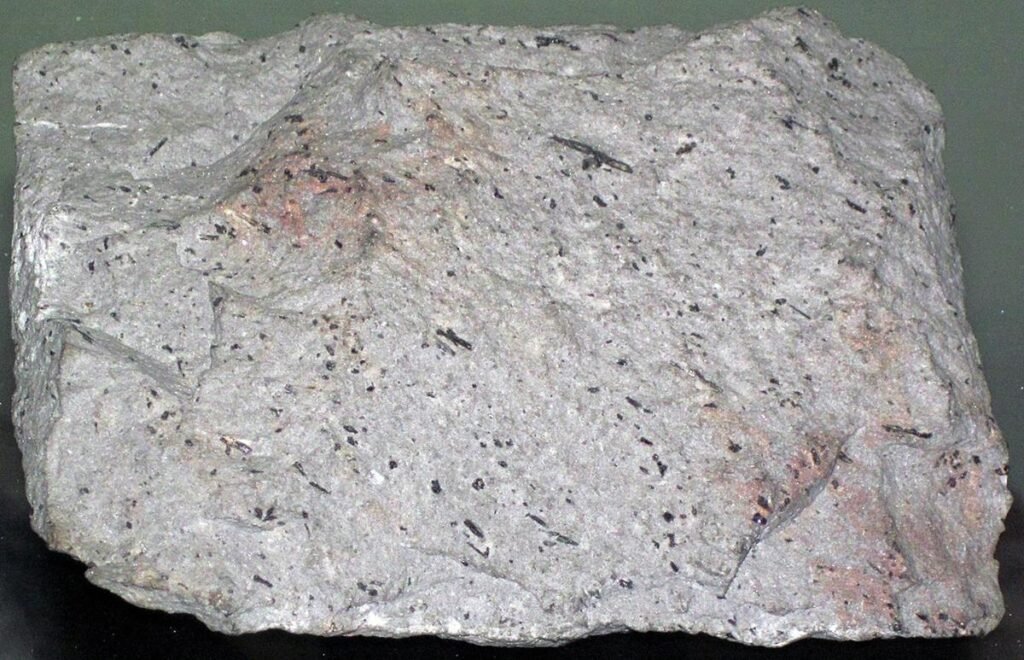To understand intermediate magmas and lavas well and their characteristics, you need to know their composition lies between mafic and felsic magmas or lavas.
Felsic magmas or lavas are relatively high in light elements, namely silicon, oxygen, aluminum, potassium, and sodium or their silicates, and lower in low in dark elements or their silicates. Dark elements are iron, magnesium, and sometimes calcium.
Silicates are rock-forming minerals with a basic tetrahedra silica unit (SiO44-).
Additionally, felsic magmas are less dense, thicker, and higher in silica (SiO2). Their eruption is mostly explosive, being higher in volatiles and occurring at lower temperatures of 650°C-800°C (1202°F-1472°F).
On the other hand, mafic magmas or lavas are proportionately higher in darker elements or their silicates and lower in lighter elements or their silicates.
Also, they are denser, highly fluid, lower in silica, and erupt mostly effusively at higher temperatures of 1000°C-1200°C (1832°F-2192°F).
Now, it should be easy to guess what intermediate magmas or lavas are. They are moderate in both light and dark elements or their silicate minerals. Also, their viscosity, density, and gas content are moderate, too.
Viscosity refers to the thickness or lightness of a fluid or how it resists flowing.

Composition and components
Intermediate lavas and magmas have 52-63 wt. % silica. Their iron, magnesium, and alkali (sodium and potassium) oxides are moderate.
Also, they will have comparable amounts of felsic minerals like feldspar, quartz, or feldspathoids and mafic minerals like biotite, amphibole, mica, and olivine.
Which exactly of these mafic or felsic minerals they have may vary.
Besides minerals and melt, other components of these magmas or their lavas are solids and volatiles. Volatile content may vary but is between felsic and mafic magmas.
Characteristics
Some of the characteristics of intermediate lava or magma are:
- They erupt at temperatures between 800 and 1100°C.(1472°F and 2012°F). These temperatures are between those of felsic and mafic kinds of lavas.
- They are moderate in amount of volatiles, i.e., usually about 3-4%. Mafic magmas have 1-3% volatiles and felsic 4-7%.
- Since they are moderately in silica, their viscosity is relatively low compared to felsic magmas but higher than mafic. Typical values are about 3.5 × 106 cP (3,500 Pa⋅s) at 1200°C (2192°F). Note that viscosity depends on composition and temperatures.
- Typical densities are 2.4-2.5g/cm3. Again intermediate.
- They often have phenocrysts. Phenocrysts are larger crystals in a finer-grained matrix.
How do they erupt?
Intermediate magmas have moderate viscosity and volatile content and will erupt both explosively and effusively.
Explosive eruptions are mainly strombolian and Vulcanian, rarely Plinian. These eruptions will eject tephra or pyroclasts. Pyroclasts are debris ejected during explosive eruptions. They include volcanic ash, scoria, lapilli, blocks, and bombs.
On the other hand, effusive eruptions will form blocky or aa lava flow and sometimes lava domes. Blocky lava flows are thicker, flow slowly, don’t go for, and their surface has large, angular to subangular blocks.
In contrast, the aa lava flows are faster, move mostly in channels, and have a clinkery surface, i.e., covered with jagged, rubbly debris.
Besides effusive eruption, intermediate magmas can have a Hawaiian-style eruption where lava fountains. An example was reported on a fissure during the 2018 Kilauea Volcano.
Lastly, alternating effusive and explosive eruptions can build composite volcanoes. These are long-lived, large, and tall mountains with steep slopes and a conical shape.
Intermediate rocks formed
Intermediate magma that cools deep inside the Earth’s crust will form diorite and monzonite.
On the other hand, intermediate lava that cools on the surface will form andesite and other less common rocks like latte, trachyandesite, and phonotephrite.
How do intermediate magmas form?
Intermediate magmas form from mafic magmas via 1) fractional crystallization with or without contamination and 2) magma mixing. Also, they can form from anatexis or partial melting of subcrustal rocks.
Where do intermediate magmas form?
Intermediate magma is the most common continental and island arcs above subduction zones. The subduction of cold, denser oceanic causes flux melting of wedge mantle. This generates mostly basaltic magma, which will evolve as it rises through the crust.
Examples of these continental arcs are the Andes in South America, Aleutian, and Cascade volcanic arcs in the US, Kamchatka Rusia, and the Central American Volcanic arc.
On the other Island, arcs include Indonesia, Tonga, Papua, Guinea, etc. Most are in the western or southwestern Pacific. Also, the Southern Atlantic and the Caribbean have small ones.
Other places these magmas form but less often are oceanic hotspots and mid-ocean ridges in small amounts. An example of an oceanic hotspot with these magmas is the Mid-Atlantic ridge.
